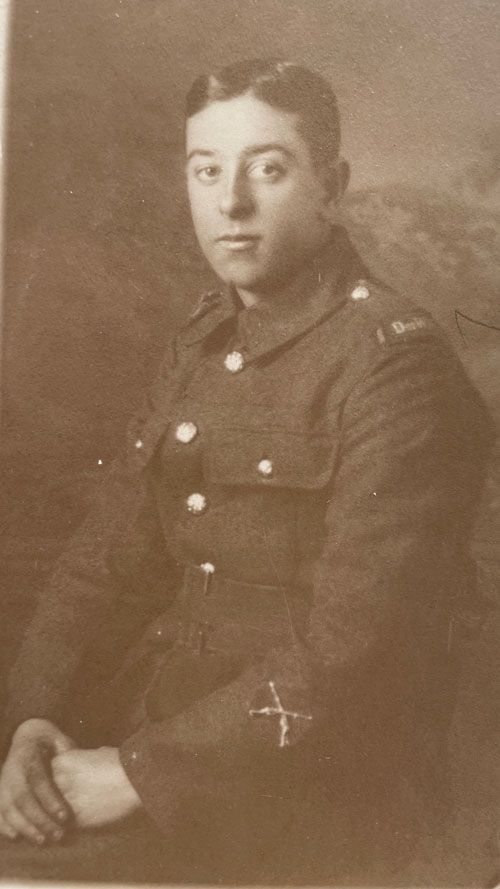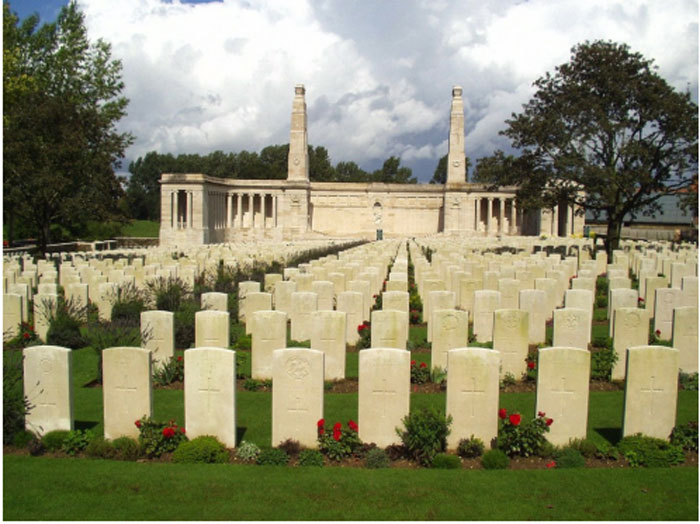
22435 Duke of Wellington (West Riding) Regiment, 2nd battalion.
Arthur Giles was born at Drax on 25th November 1898, the eldest son and first child of four born between 1898 and 1910 to Drax born Robert Giles (1874-1966) and Mary Anne (nee Guest; 1878-1954) of nearby Goole. The couple married in the Goole district in early 1898.
By 1901 Robert Giles, the son of a master shoemaker, worked as a farm horseman at Mitchell Laithes farm, Healey, Ossett. He was living with his wife and two children, Arthur, aged 2 years and Ossett born Mildred aged 2 months. By 1911 Robert and Mary Anne had added two more children, George (born 1903) and Robert (born 1909) The family had moved onto Newland, a hamlet near Selby, where Robert was working as a farm labourer.
By 1921 the couple were living at Holly Tree Farm, Balne, Snaith, Yorks where Robert was a farmer and employer on his own account. The couple had two more children, Edith (born 1914) and Mary (born 1920). By this time their eldest son, Arthur had been killed in the war and their eldest daughter Mildred had married farmer and carrier, Edmund Lunn, in early 1919 and were living at Halfway Houses Drax.
Above; Private Arthur Giles wearing the D of W (Duke of Wellington) shoulder badge and the crossed rifles on the cuff. The position of the crossed rifles badge worn on the cuff denotes “Marksman”. Arthur would be 18 or just 19 years of age when this photograph was taken.
Parts of Arthur’s Army Service Record have survived. On 18th December 1916 Arthur Giles enlisted at Goole and joined the Training Reserve battalion until 1st April 1917 (temporary service number 5/30983) when he was subsequently transferred to the Duke of Wellington Regiment.
On 2nd February 1917 Arthur, 5’3” tall and weighing 104lbs, aged 18 years and 21 days, a farm labourer of Newland, Drax, near Selby satisfied the Medical Board as to his fitness. He was mobilised at Pontefract on 2nd April 1917 and two days later he was posted to Rugeley Camp for training. On 20th November 1917 he was transferred to 3rd Duke of Wellington (West Riding) Regiment “at home” until 30th January 1918. Arthur embarked for France a day later and was posted to Base depot in France on 31st January 1918. He was transferred to 2nd battalion Duke of Wellington’s in the field on 12th February 1918, two days after his battalion transferred to 10th Brigade in the 4th Division.
Arthur was hospitalised on 20th May 1918 and rejoined his post on 14th June 1918 only to suffer gunshot wounds in the chest (slight) in the field on 31st July 1918. A month later Arthur was killed in the field on 30th August 1918. On 25th November 1918 the authorities forwarded Arthur’s “effects” to his father, viz a Wallet, Religious Book, Letters, Photos & Cards.
Private Arthur Giles had spent 1 year and 256 days in the Army including 212 of those days in action in France between his embarkation on 31st January 1918 and his untimely death on 30th August 1918. Just seven bloody months of conflict when Arthur’s 2nd battalion Duke of Wellington (West Riding) Regiment in the 10th Brigade of the 4th Division saw action in The First Battles of the Somme 1918. This comprised:
– First Battle of Arras 1918 (28 March: defensive fight against German Operation “Mars”)
The Battles of the Lys in phases:
– Battle of Hazebrouck (12-15 April, in which the battalion fought in the Defence of Hinges Ridge)
– Battle of Bethune (18 April)
The Advance in Flanders (18 August – 6 September)
The Second Battles of Arras 1918 in phases: – Battle of the Scarpe 1918 (26-30 August)
The battle of the Scarpe was to be Private Arthur Giles’ final battle when he was killed in action on its last day. He was 19 years of age.
Arthur is remembered with honour at the Vis-En-Artois British Cemetery, Haucourt, France (below)

Vis-En-Artois and Haucourt were taken by the Canadian Corps on 27 August 1918 just three days before Arthur’s death. The cemetery was begun immediately afterwards and was used by fighting units and field ambulances until the middle of October. It consisted originally of 430 graves (in Plots I and II) of which 297 were Canadian and 55 belonged to the 2nd Duke of Wellington’s Regiment. It was increased after the Armistice by the concentration of graves from the battlefields of April-June 1917, August and September 1918, and from the smaller cemeteries in the neighbourhood.
In February and March 1921 Private Arthur Giles was posthumously awarded the British War Medal and the Victory Medal for his service in a theatre of war overseas. Arthur will be remembered at the Ossett War Memorial alongside his brothers and sisters in arms. We know them as The Ossett Fallen.
Researched by The Ossett Fallen Team 2023. Biography by Alan Howe.
Sources
Commonwealth War Graves Commission
https://www.cwgc.org/find-records/find-war-dead/casualty-details/250222/arthur-giles/